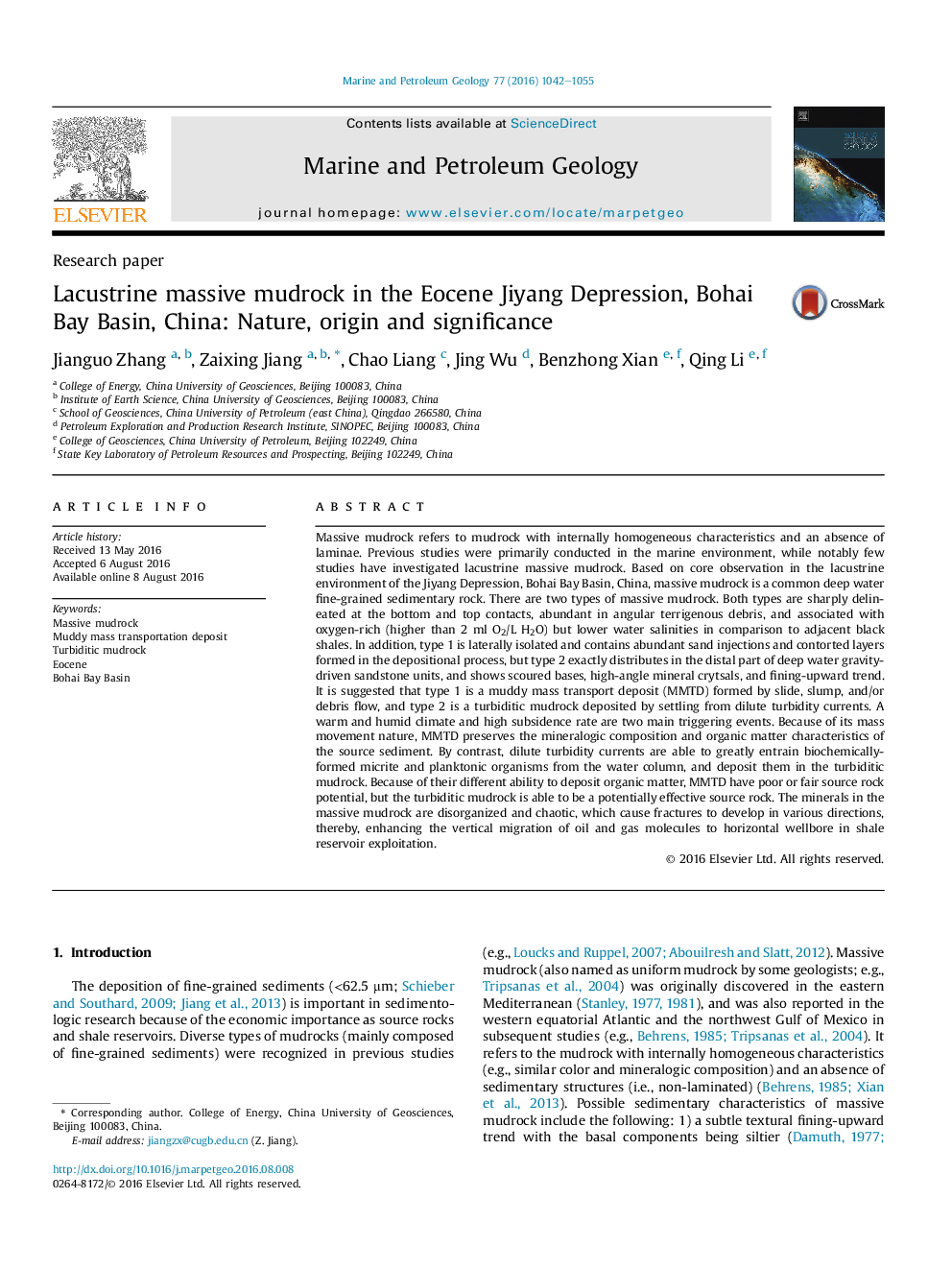| کد مقاله | کد نشریه | سال انتشار | مقاله انگلیسی | نسخه تمام متن |
|---|---|---|---|---|
| 6434657 | 1637150 | 2016 | 14 صفحه PDF | دانلود رایگان |

Massive mudrock refers to mudrock with internally homogeneous characteristics and an absence of laminae. Previous studies were primarily conducted in the marine environment, while notably few studies have investigated lacustrine massive mudrock. Based on core observation in the lacustrine environment of the Jiyang Depression, Bohai Bay Basin, China, massive mudrock is a common deep water fine-grained sedimentary rock. There are two types of massive mudrock. Both types are sharply delineated at the bottom and top contacts, abundant in angular terrigenous debris, and associated with oxygen-rich (higher than 2Â ml O2/L H2O) but lower water salinities in comparison to adjacent black shales. In addition, type 1 is laterally isolated and contains abundant sand injections and contorted layers formed in the depositional process, but type 2 exactly distributes in the distal part of deep water gravity-driven sandstone units, and shows scoured bases, high-angle mineral crytsals, and fining-upward trend. It is suggested that type 1 is a muddy mass transport deposit (MMTD) formed by slide, slump, and/or debris flow, and type 2 is a turbiditic mudrock deposited by settling from dilute turbidity currents. A warm and humid climate and high subsidence rate are two main triggering events. Because of its mass movement nature, MMTD preserves the mineralogic composition and organic matter characteristics of the source sediment. By contrast, dilute turbidity currents are able to greatly entrain biochemically-formed micrite and planktonic organisms from the water column, and deposit them in the turbiditic mudrock. Because of their different ability to deposit organic matter, MMTD have poor or fair source rock potential, but the turbiditic mudrock is able to be a potentially effective source rock. The minerals in the massive mudrock are disorganized and chaotic, which cause fractures to develop in various directions, thereby, enhancing the vertical migration of oil and gas molecules to horizontal wellbore in shale reservoir exploitation.
Journal: Marine and Petroleum Geology - Volume 77, November 2016, Pages 1042-1055